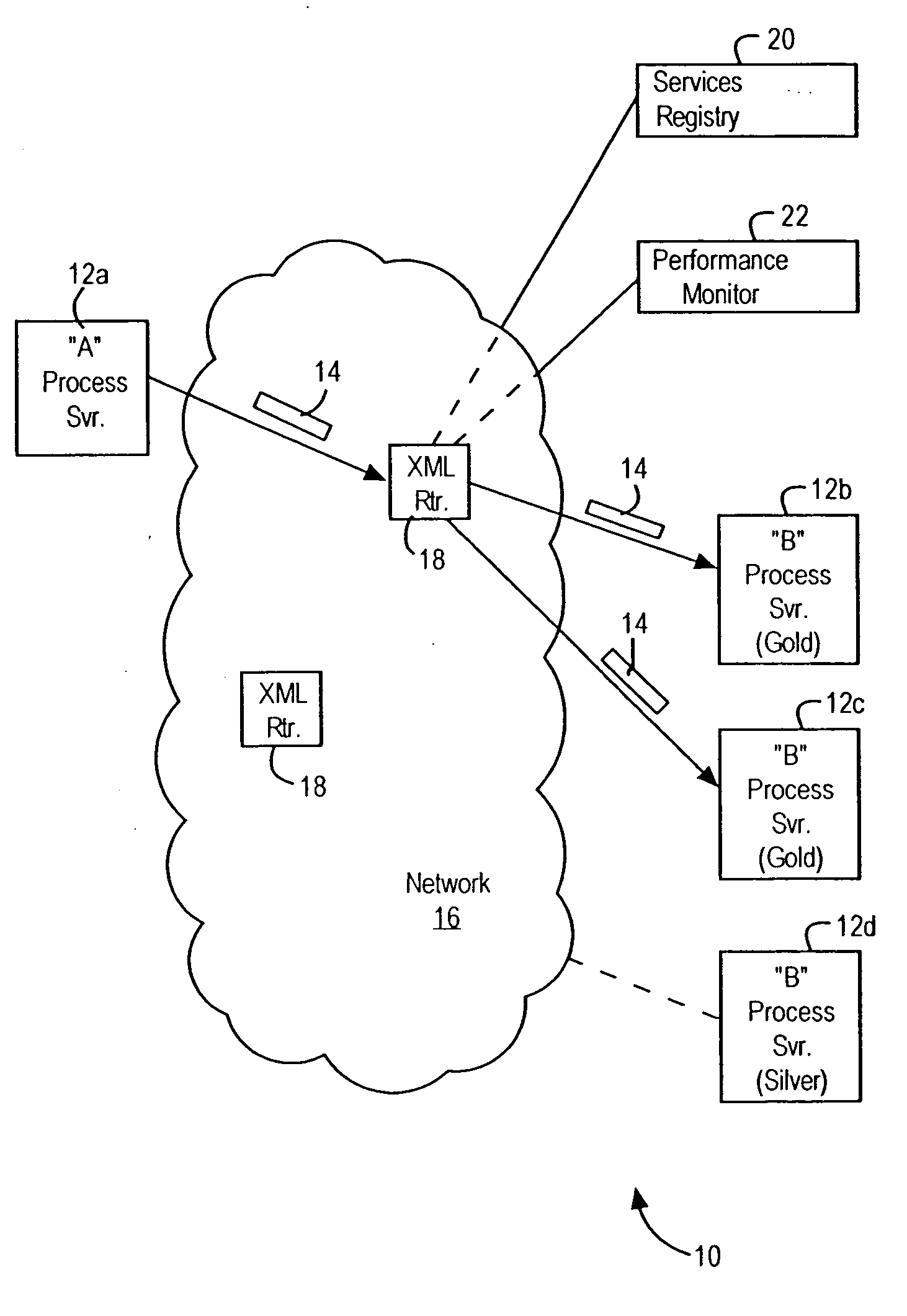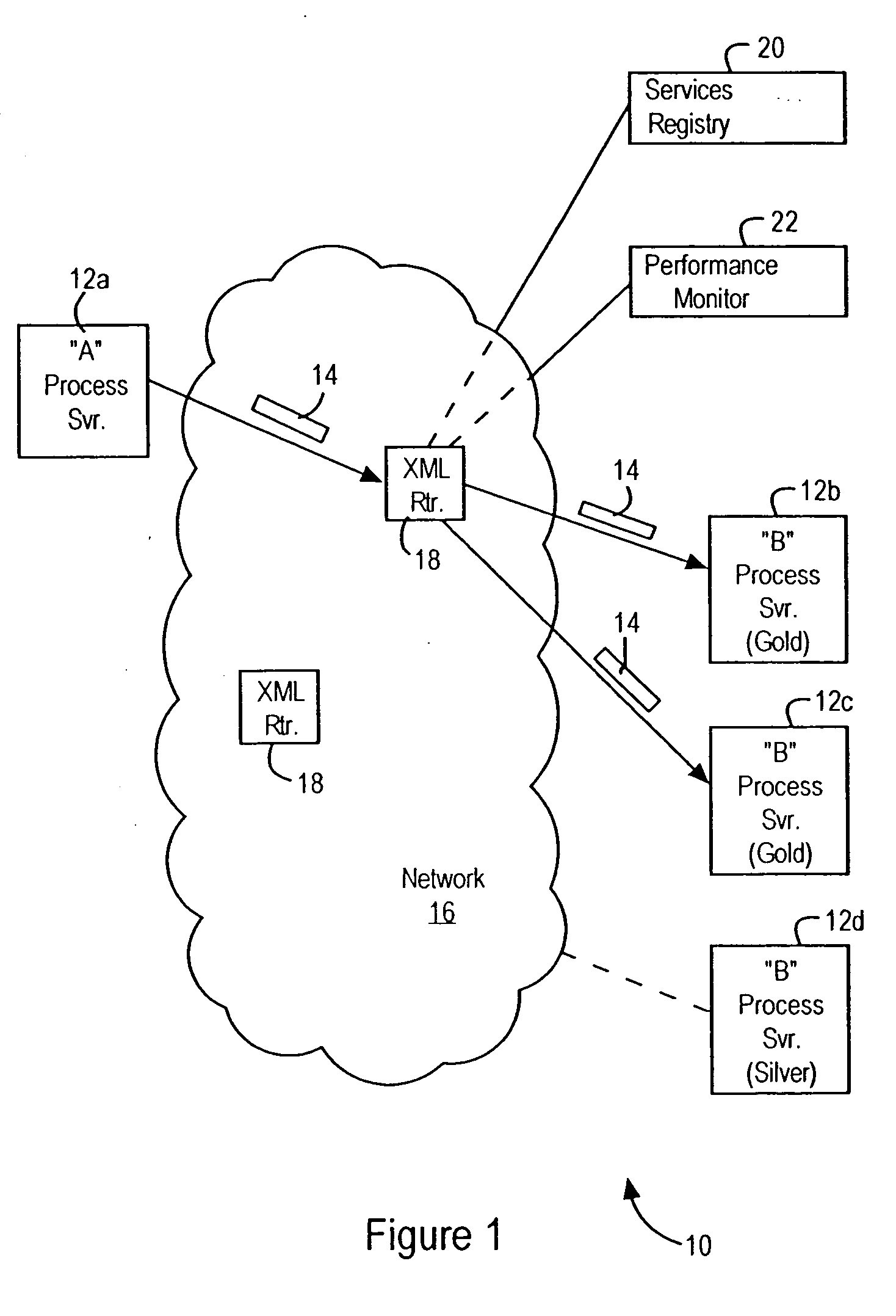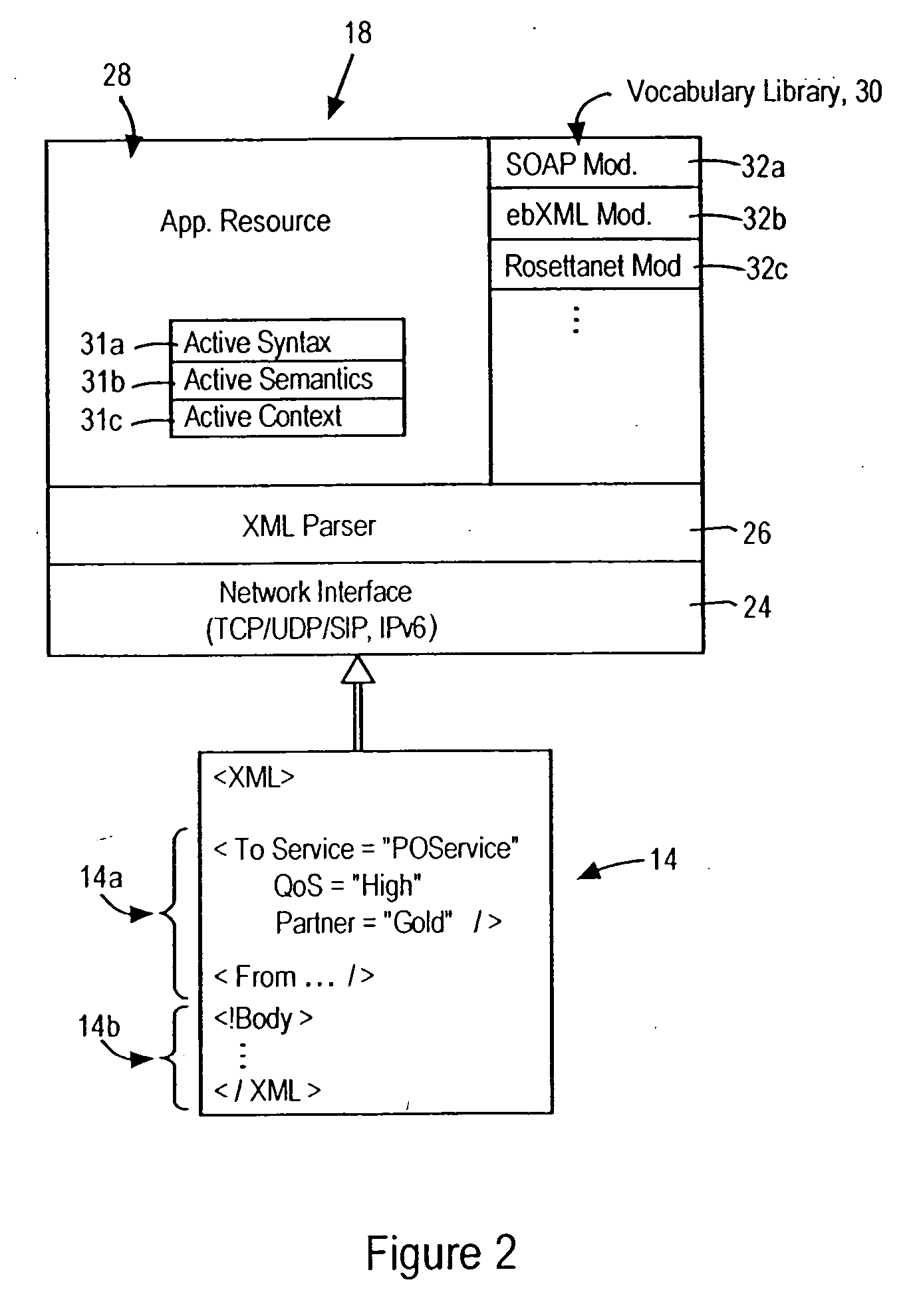Network router configured for executing network operations based on parsing XML tags in a received XML document
a network router and document parsing technology, applied in the field of routers, can solve the problems of limited ability to provide advanced networking operations necessary for integration of services, limited ability to implement integration of services using existing protocols, and limited use of html in its ability to provide advanced networking operations, etc., to achieve the effect of enhancing services and increasing “vocabulary
- Summary
- Abstract
- Description
- Claims
- Application Information
AI Technical Summary
Benefits of technology
Problems solved by technology
Method used
Image
Examples
Embodiment Construction
[0021]FIG. 1 is a block diagram illustrating a system 10 for providing a network based integration of distributed services based on transfer of extensible markup language (XML) based messages 14 between network nodes, according to an embodiment of the present invention. In particular, FIG. 1 illustrates process servers 12 configured for providing prescribed services based on exchange of XML based messages between each other. For example, the process server 12a may be configured for providing prescribed business services for a first business entity “A”, whereas the process servers 12b, 12c, and 12d may be configured for providing respective prescribed business services for a second business entity “B”, where the first and second business entities “A” and “B are business partners (e.g., supplier and business consumer) providing computer based business transactions across a prescribed open protocol network 16.
[0022] As described above with respect to the background of the invention, X...
PUM
 Login to View More
Login to View More Abstract
Description
Claims
Application Information
 Login to View More
Login to View More - R&D
- Intellectual Property
- Life Sciences
- Materials
- Tech Scout
- Unparalleled Data Quality
- Higher Quality Content
- 60% Fewer Hallucinations
Browse by: Latest US Patents, China's latest patents, Technical Efficacy Thesaurus, Application Domain, Technology Topic, Popular Technical Reports.
© 2025 PatSnap. All rights reserved.Legal|Privacy policy|Modern Slavery Act Transparency Statement|Sitemap|About US| Contact US: help@patsnap.com



